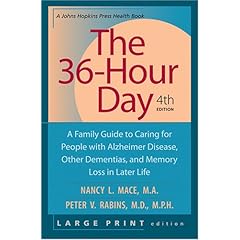 About 34 million Americans act as caregivers, devoting an average of 21 hours a week to the task. These individuals provide 80 percent of the long-term care received in the United States. Unpaid caregivers, usually friends and family members, provide the majority of support for disabled individuals in the United States, grossing the equivalent of $350 billion in free labor last year -- more than the total Medicaid or Medicare expenditures in 2005.
About 34 million Americans act as caregivers, devoting an average of 21 hours a week to the task. These individuals provide 80 percent of the long-term care received in the United States. Unpaid caregivers, usually friends and family members, provide the majority of support for disabled individuals in the United States, grossing the equivalent of $350 billion in free labor last year -- more than the total Medicaid or Medicare expenditures in 2005.Source United Press International
By ROSALIE WESTENSKOW
UPI Correspondent
WASHINGTON, July 9 (UPI) -- As the percentage of Americans over 65 steadily grows, so does the demand for long-term care -- a burden that falls largely on the shoulders of family members, experts said Monday.
Unpaid caregivers, usually friends and family members, provide the majority of support for disabled individuals in the United States, grossing the equivalent of $350 billion in free labor last year -- more than the total Medicaid or Medicare expenditures in 2005 -- according to AARP, a non-profit membership association for those ages 50 and up.
About 34 million Americans act as caregivers, devoting an average of 21 hours a week to the task. These individuals provide 80 percent of the long-term care received in the United States, but many lack the time and training to give their loved ones the care they need, said Melody Barnes, executive vice president for policy at the Center for American Progress, a progressive think tank.
"Family caregivers often have low to no training (and) have to juggle multiple roles at home and in the labor force," Barnes said Monday at a panel discussion.
One of the reasons unpaid caregivers have taken such a prominent role in long-term care lies in a shortage of professionals working in that sector.
"Multiple factors account for the shortage of caregivers, including the poor compensation, the lack of opportunities for professional development and the lack of benefits," Barnes said.
At the same time, shrinking family sizes project a deficit of available descendants to care for the elderly in the future, said Robert Friedland, founding director of the Center on an Aging Society at Georgetown University.
"Right now, and for the next decade or so, the population at greatest risk for needing long-term care -- people age 85 and older -- are more likely to have had children and more likely to have three or more children," Friedland said. "In contrast, by 2050, the population age 85 and older is less likely to have had children and, if they did have children, are more likely to have had one or two children, rather than three or four children."
But as the baby boomer generation steps into retirement, more and more caregivers will be needed. By 2050 the number of individuals between the ages of 75 and 85 will double, and the number over 85 will quadruple.
Unless something dramatic happens during that time period, the number of caregivers -- paid or unpaid -- will not be large enough to meet the demand for long-term care, Friedland said.
"After 2015, the pool of primary caregivers is going to get shallower, not deeper," he said.
In the face of these changing demographics, policymakers and others need to start exploring ways to bolster the long-term care sector, said Robyn Stone, executive director of the Institute for the Future of Aging Services at the American Association of Homes and Services for the Aging, a membership group for non-profit organizations that provide care to the elderly.
"If we don't do something about addressing the formal, long-term-care workforce, we are going to have some serious problems" in the future, Stone said.
Currently, most healthcare workers garner lower paychecks if they work in long-term care than in other sectors of the industry.
"We need to have financial and other incentives specifically for this sector," Stone said.
Policymakers can also provide support to family caregivers, easing the emotional and physical stress they carry, said Carol Levine, director of the Families and Health Care Project at the United Hospital Fund, a health services research organization.
The recent formation of the New York State Family Caregiver Council, set up through the New York Office of the Aging and slated to begin its work this fall, represents an optimistic step toward a more collaborative approach to long-term care, Levine said.
"It's a very diverse group and they have the support of the highest level of state government," Levine told United Press International. "It has a mandate to dig into the issue."
A long-term-care insurance plan that spread the costs of providing care across the population would be a better solution than today's system, said Judy Feder, dean of the Georgetown Public Policy Institute.
"The financing structure has got to be a public-private partnership, with a strong public core around which the private sector can build," Feder told UPI.
Such a plan could expand the safety net for low- to middle-income families and provide other means of helping individuals cope with disability and the prospect of time-consuming and expensive long-term-care needs.
A federal bill three years in the making proposes a similar plan. The Community Living Assistance Services and Supports Act, sponsored by Sens. Edward Kennedy, D-Mass., and Tom Harkin, D-Iowa, would establish a voluntary long-term-care insurance pool. Participants who paid a monthly premium would be eligible for monetary benefits if they became disabled and would be able to choose what services to buy with the money.

The 36-Hour Day: A Family Guide to Caring for People with Alzheimer Disease and Memory Loss in Later Life